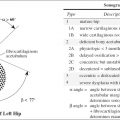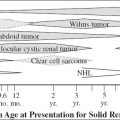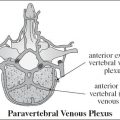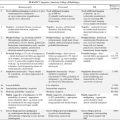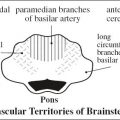Axis Anomalies
1. Persistent ossiculum terminale = Bergman ossicle
√ unfused odontoid process > 12 years of age
DDx: type 1 odontoid fracture
2. Odontoid aplasia (extremely rare)
3. Os odontoideum
= independent os cephalad to axis body in location of odontoid process
√ absence of odontoid process
√ anterior arch of atlas hypertrophic + situated too far posterior in relation to axis body
Cx: atlantoaxial instability
DDx: type 2 odontoid fracture (uncorticated margin)
Odontoid Erosion
mnemonic: P LARD
Psoriasis
Lupus erythematosus
Ankylosing spondylitis
Rheumatoid arthritis
Down syndrome
Atlantoaxial Subluxation
= displacement of atlas with respect to axis
(1) Posterior atlantoaxial subluxation (rare)
(2) Anterior atlantoaxial subluxation (common)
= distance between dens + anterior arch of C1 (measurement along midplane of atlas on lateral view):
| (a) predental space: | > 2.5 mm > 4.5 mm (in children) |
| (b) retrodental space: | < 18 mm |
Causes of subluxation:
A. Congenital
1. Occipitalization of atlas
0.75% of population; fusion of basion + anterior arch of atlas
2. Congenital insufficiency of transverse ligament
3. Os odontoideum / aplasia of dens
4. Down syndrome (20%)
5. Morquio syndrome
6. Bone dysplasia
B. Arthritis
due to laxity of transverse ligament or erosion of dens
1. Rheumatoid arthritis
2. Psoriatic arthritis
3. Reiter syndrome
4. Ankylosing spondylitis
5. SLE
rare: in gout + CPPD
C. Inflammatory process
pharyngeal infection in childhood, retropharyngeal abscess, coryza, otitis media, mastoiditis, cervical adenitis, parotitis, alveolar abscess
√ dislocation 8–10 days after onset of symptoms
D. Trauma (very rare without odontoid fracture)
E. Marfan disease
mnemonic: JAP LARD
Juvenile rheumatoid arthritis
Ankylosing spondylitis
Psoriatic arthritis
Lupus erythematosus
Accident (trauma)
Retropharyngeal abscess, Rheumatoid arthritis
Down syndrome
Pseudosubluxation of Cervical Spine
= ligamentous laxity in infants allows for movement of the vertebral bodies on each other, esp. C2 on C3
SPINAL DYSRAPHISM
= abnormal / incomplete fusion of midline embryologic mesenchymal, neurologic, bony structures
External signs (in 50%):
• subcutaneous lipoma
• hypertrichosis
• pigmented nevi
• pathologic plantar response
• bladder + bowel dysfunction
• spastic gait disturbance
• foot deformities
• absent tendon reflexes
• sinus tract
• skin dimple
Spina Bifida
= incomplete closure of bony elements of the spine (lamina + spinous processes) posteriorly
Spina Bifida Occulta
= OCCULT SPINAL DYSRAPHISM
= cleft / tethered cord WITH skin cover
Frequency: 15% of spinal dysraphism
• rarely leads to neurologic deficit in itself
Associated with:
(a) vertebral defect (85 – 90%)
(b) lumbosacral dermal lesion (80%):
• hairy tuft (= hypertrichosis), dimple, sinus tract, nevus, hyperpigmentation, hemangioma, subcutaneous mass
1. Diastematomyelia
2. Lipomeningocele
3. Tethered cord syndrome
4. Filum terminale lipoma
5. Intraspinal dermoid
6. Epidermoid cyst
7. Myelocystocele
8. Split notochord syndrome
9. Meningocele
10. Dorsal dermal sinus
11. Tight filum terminale syndrome
Spina Bifida Aperta
= SPINA BIFIDA CYSTICA
= posterior protrusion of all / parts of the contents of the spinal canal through a bony spinal defect
Frequency: 85% of spinal dysraphism
Associated with: hydrocephalus, Arnold-Chiari II malformation
◊ Most severe form of midline fusion defect
• neural placode WITHOUT skin cover
Associated with: neurologic deficit in > 90%
1. Simple meningocele
= herniation of CSF-filled sac without neural elements
2. Myelocele
= midline plaque of neural tissue lying exposed at the skin surface
3. Myelomeningocele
= a myelocele elevated above skin surface by expansion of subarachnoid space ventral to neural plaque
4. Myeloschisis
= surface presentation of neural elements completely uncovered by meninges
Caudal Spinal Anomalies
= malformation of distal spine and cord
Associated with: hindgut, renal, genitourinary anomalies
1. Terminal myelocystocele
2. Lateral meningocele
3. Caudal regression
Segmentation Anomalies of Vertebral Bodies
during 9th–12th week of gestation two ossification centers form for the ventral + dorsal half of vertebral body
1. Asomia = agenesis of vertebral body
√ complete absence of vertebral body
√ hypoplastic posterior elements may be present
2. Hemivertebra
(a) Unilateral wedge vertebra
√ right / left hemivertebra
√ scoliosis at birth
(b) Dorsal hemivertebra
√ rapidly progressive kyphoscoliosis
(c) Ventral hemivertebra (extremely rare)
3. Coronal cleft
= failure of fusion of anterior + posterior ossification centers
May be associated with: premature male infant, Chondrodystrophia calcificans congenita
Location: usually in lower thoracic + lumbar spine
√ vertical radiolucent band just behind midportion of vertebral body; disappears mostly by 6 months of life
4. Butterfly vertebra
= failure of fusion of lateral halves ← persistence of notochordal tissue
May be associated with: anterior spina bifida ± anterior meningocele
√ widened vertebral body with butterfly configuration (AP view)
√ adaptation of vertebral endplates of adjacent vertebral bodies
5. Block vertebra
= congenital vertebral fusion
Location: lumbar / cervical
√ height of fused vertebral bodies equals the sum of heights of involved bodies + intervertebral disk
√ “waist” at level of intervertebral disk space
6. Hypoplastic vertebra
7. Klippel-Feil syndrome
VERTEBRAL BODY
Increased T1 Signal Intensity of Spinal Bone Marrow
= mostly benign
A. FOCAL
1. Hemangioma (11%)
2. Modic type 2 endplate changes
3. Lipoma
4. Paget disease (later stage)
5. Hemorrhage (with fracture)
6. Melanoma
B. DIFFUSE / multifocal
1. Normal variant
2. S/P radiation treatment
3. Osteoporosis
4. Multiple hemangiomas
5. Spondyloarthritis
6. Anorexia nervosa
Decreased T1 Signal Intensity of Spinal Bone Marrow
= equal to / lower than SI of muscle
A. CENTERED ON ENDPLATE
1. Modic type 1 + 3 endplate changes
2. Osteomyelitis
3. Amyloid
B. CENTERED IN VERTEBRAL BODY
1. Malignancy (metastasis, lymphoma, plasma cell dyscrasia, solitary plasmacytoma, multiple myeloma)
2. Fracture
3. Hemangioma (rare presentation)
4. Fibrous dysplasia
C. CENTERED IN POSTERIOR ELEMENTS METASTASES, MYELOMA, LYMPHOMA, FRACTURE, PRIMARY BONE TUMOR
D. DIFFUSE / MULTIFOCAL
1. Hematopoietic hyperplasia
(a) chronic anemia: sickle cell disease, thalassemia, hereditary spherocytosis
(b) chronic illness: HIV
(c) heavy smoking
(d) obesity
(e) drugs: granulocyte-colony-stimulating factor, erythropoietin
2. Neoplasm
√ avid enhancement
3. Renal osteodystrophy
4. Systemic inflammation: sarcoidosis, gout, spondyloarthropathy
4. Hematologic malignancy: myelofibrosis. mastocytosis
Destruction of Vertebral Body
A. NEOPLASM
1. Metastasis
2. Primary neoplasm: chordoma, chondrosarcoma, lymphoma, multiple myeloma
B. INFECTION
1. Pyogenic vertebral osteomyelitis
2. Tuberculous spondylitis
3. Brucellosis
4. Fungal disease
5. Echinococcosis
6. Sarcoidosis
Granulomatous Spondylitis
1. TB
2. Brucellosis
3. Sarcoidosis
Gas in Vertebral Body
1. Osteonecrosis = Kümmell disease
√ linear collection
2. Osteomyelitis
√ small gas bubbles ± extension into adjacent soft-tissues
3. Intraosseous displacement of cartilaginous / Schmorl node
√ branching gas pattern
4. Malignancy
Small Vertebral Body
1. Radiation therapy
during early childhood in excess of 1,000 rad
2. Juvenile rheumatoid arthritis
Location: cervical spine
√ atlantoaxial subluxation may be present
√ vertebral fusion may occur
3. Eosinophilic granuloma
Location: lumbar / lower thoracic spine
√ compression deformity / vertebra plana
4. Gaucher disease
= deposits of glucocerebrosides within RES
√ compression deformity
5. Platyspondyly generalisata
= flattened vertebral bodies associated with many hereditary systemic disorders: achondroplasia, spondyloepiphyseal dysplasia tarda, mucopolysaccharidosis, osteopetrosis, neurofibromatosis, osteogenesis imperfecta, thanatophoric dwarfism
√ disk spaces of normal height
Vertebra Plana
mnemonic: FETISH
Fracture (trauma, osteogenesis imperfecta)
Eosinophilic granuloma (Langerhans cell histiocytosis)
Tumor (metastatic neuroblastoma, myeloma, leukemia, aneurysmal bone cyst, Ewing sarcoma)
Infection
Steroids (avascular necrosis)
Hemangioma
Metastasis / Myeloma
Eosinophilic granuloma
Lymphoma
Trauma / TB
SIGNS OF ACUTE VERTEBRAL COLLAPSE ON MR
1. Osteoporosis
√ retropulsion of posterior bone fragment
2. Malignancy
√ epidural soft-tissue mass
√ no residual normal marrow signal intensity
√ abnormal enhancement
Enlarged Vertebral Body
1. Paget disease
√ “picture framing”; bone sclerosis
2. Gigantism
√ increase in height of body + disk
3. Myositis ossificans progressiva
√ bodies greater in height than width
√ osteoporosis
√ ossification of ligamentum nuchae
Enlarged Intervertebral Foramen
= NEUROFORAMINAL WIDENING = DUMBBELL-SHAPED / HOURGLASS LESION
A. SOLID BENIGN
1. Benign peripheral nerve sheath tumor (PNST):
› Neurofibroma
› Neurilemmoma = schwannoma
2. Meningioma
3. Extradural cavernous hemangioma
4. Congenital absence / hypoplasia of pedicle
B. SOLID MALIGNANT
1. Metastatic destruction of pedicle: neuroblastoma
2. Malignant PNST
3. Ewing sarcoma / primitive neuroectodermal tumor
4. Solitary bone plasmacytoma
5. Chondrosarcoma
C. CYSTIC
1. Dural ectasia (Marfan syndrome, Ehlers-Danlos syndrome)
2. Synovial cyst
3. Traumatic pseudomeningocele
4. Arachnoid cyst
5. Hydatid cyst
Cervical Spine Fusion
mnemonic: SPAR BIT
Senile hypertrophic ankylosis (DISH)
Psoriasis, Progressive myositis ossificans
Ankylosing spondylitis
Reiter disease, Rheumatoid arthritis (juvenile)
Block vertebra (Klippel-Feil)
Infection (TB)
Trauma
Vertebral Border Abnormality
Straightening of Anterior Border
1. Ankylosing spondylitis
2. Paget disease
3. Psoriatic arthritis
4. Reiter disease
5. Rheumatoid arthritis
6. Normal variant
Anterior Scalloping of Vertebrae
1. Aortic aneurysm
2. Lymphadenopathy
3. Tuberculosis
4. Multiple myeloma (paravertebral soft-tissue mass)
Posterior Scalloping of Vertebrae
in conditions associated with dural ectasia
A. INCREASED INTRASPINAL PRESSURE
1. Communicating hydrocephalus
2. Ependymoma
B. MESENCHYMAL TISSUE LAXITY (dural ectasia)
1. Neurofibromatosis
2. Marfan syndrome
3. Ehlers-Danlos syndrome
4. Posterior meningocele
C. BONE SOFTENING
1. Mucopolysaccharidoses: Hurler, Morquio, Sanfilippo
2. Achondroplasia
3. Acromegaly (lumbar vertebrae)
4. Ankylosing spondylitis (lax dura acting on osteoporotic vertebrae)
mnemonic: SALMON
Spinal cord tumor
AchondroPlasia
Mucopolysaccharidosis
Osteogenesis imperfecta
Neurofibromatosis
mnemonic: DAMN MALE SHAME
Dermoid
Ankylosing spondylitis
Meningioma
Neurofibromatosis
Marfan syndrome
Acromegaly
Lipoma
Ependymoma
Syringohydromyelia
Hydrocephalus
Achondroplasia
Mucopolysaccharidoses
Ehlers-Danlos syndrome
Bony Outgrowths from Vertebra
A. CHILDHOOD
1. Hurler syndrome = gargoylism
√ rounded appearance of vertebral bodies
√ mild kyphotic curve with smaller vertebral body at apex of kyphosis displaying tonguelike beak at anterior half (usually at T12 / L1)
√ “step-off” deformities along anterior margins
2. Hunter syndrome
less severe changes than in Hurler syndrome
3. Morquio disease
√ flattened + widened vertebral bodies
√ anterior “tonguelike” elongation of central portion of vertebral bodies
4. Hypothyroidism = cretinism
√ small flat vertebral bodies
√ anterior “tonguelike” deformity (in children only)
√ widened disk spaces + irregular endplates
B. ADULTS
1. Spondylosis deformans
√ osteophytosis along anterior + lateral aspects of endplates with horizontal + vertical course ← shearing of outer annular fibers (Sharpey fibers connecting annulus fibrosus to adjacent vertebral body)
2. Diffuse idiopathic skeletal hyperostosis (DISH)
√ flowing calcifications + ossifications along anterolateral aspect of > 4 contiguous thoracic vertebral bodies ± osteophytosis
3. Ankylosing spondylitis
√ bilateral symmetric syndesmophytes (= ossification of annulus fibrosus)
√ “bamboo spine”
√ “diskal ballooning” = biconvex intervertebral disks ← osteoporotic deformity of endplates
√ straightening of anterior margins of vertebral bodies ← erosions
√ ossification of paraspinal ligaments
4. Fluorosis
√ vertebral osteophytosis + hyperostosis
√ sclerotic vertebral bodies + kyphoscoliosis
√ calcification of paraspinal ligaments
5. Acromegaly
√ increase in anteroposterior diameter of vertebrae + concavity on posterior portion
√ enlargement of intervertebral disk
6. Hypoparathyroidism
7. Neuropathic arthropathy
8. Sternoclavicular hyperostosis
Spine Ossification
1. Syndesmophyte = ossification of annulus fibrosus
√ thin slender vertical outgrowth extending from margin of one vertebral body to next
Associated with: ankylosing spondylitis, ochronosis
2. Osteophyte
= ossification of anterior longitudinal ligament
√ initially triangular outgrowth several millimeters from edge of vertebral body
Associated with: osteoarthritis
3. Flowing anterior ossification
= ossification of disk, anterior longitudinal ligament, paravertebral soft tissues
Associated with: DISH
4. Paravertebral ossification
√ initially irregular / poorly defined paravertebral ossification eventually merging with vertebral body
Associated with: psoriatic arthritis, Reiter syndrome
Vertebral Endplate Abnormality
1. Cupid’s bow vertebra
Cause: ? (normal variant)
Location: 3rd–5th lumbar vertebra
√ two parasagittal posterior concavities on inferior aspect of vertebral body (best viewed on AP)
2. Osteoporosis (senile / steroid-induced)
(a) “fish vertebra / fish-mouth vertebra”


Cause: osteoporosis, osteomalacia, Paget disease, osteogenesis imperfecta, multiple myeloma, hyperparathyroidism, Gaucher disease
√ biconcave vertebra
√ bone sclerosis along endplates
(b) wedge-shaped vertebra
√ anterior border height reduced by > 4 mm compared to posterior border height
(c) “pancake” vertebra
√ overall flattening of vertebra
3. “H-vertebra”
= compression of central portions ← subchondral infarcts
Cause: sickle cell + other anemias, Gaucher disease
4. Schmorl / cartilaginous node
= intraosseous herniation of nucleus pulposus at center of weakened endplate
Cause: Scheuermann disease, trauma, hyperparathyroidism, osteochondrosis
5. Butterfly vertebra
Cause: congenital defect
6. Limbus vertebrae
= intraosseous herniation of disk material at junction of vertebral bony rim of centra + endplate (anterosuperior corner)
7. “Rugger-jersey spine”
Cause: hyperparathyroidism, myelofibrosis
√ horizontal sclerosis subjacent to vertebral endplates with intervening normal osseous density (resembling the stripes on rugby jerseys)
8. “Sandwich” / “Hamburger” vertebra
Cause: osteopetrosis, myelofibrosis
√ sclerotic endplates alternate with radiolucent midportions of vertebral bodies
9. “Ring” epiphysis
Ring Epiphysis
= normal small steplike recess at corner of anterior edge of developing vertebral body that calcifies ~ 6 years of age, ossifies ~ 13 years of age, and fuses with vertebral body ~ 17 years of age
1. Severe osteoporosis
2. Healing rickets
3. Scurvy
Bullet-shaped Vertebral Body
mnemonic: HAM
Hypothyroidism
Achondroplasia
Morquio syndrome
Bone-within-bone Vertebra
= “ghost vertebra” following stressful event during vertebral growth phase in childhood
1. Stress line of unknown cause
2. Leukemia
4. Thorotrast injection, TB
5. Rickets
6. Scurvy
7. Hypothyroidism
8. Hypoparathyroidism
Ivory Vertebra
= increase in opacity of vertebral body retaining its size and contours
Cause: stimulation of osteoblasts, coarsening of trabeculae, reactive bone formation
| (a) in adults: | metastasis (prostate, breast), lymphoma (Hodgkin disease), Paget disease, osteosarcoma, carcinoid |
| (b) in children: | Hodgkin disease >> osteosarcoma, metastatic neuroblastoma, medulloblastoma, osteoblastoma |
Stay updated, free articles. Join our Telegram channel

Full access? Get Clinical Tree



